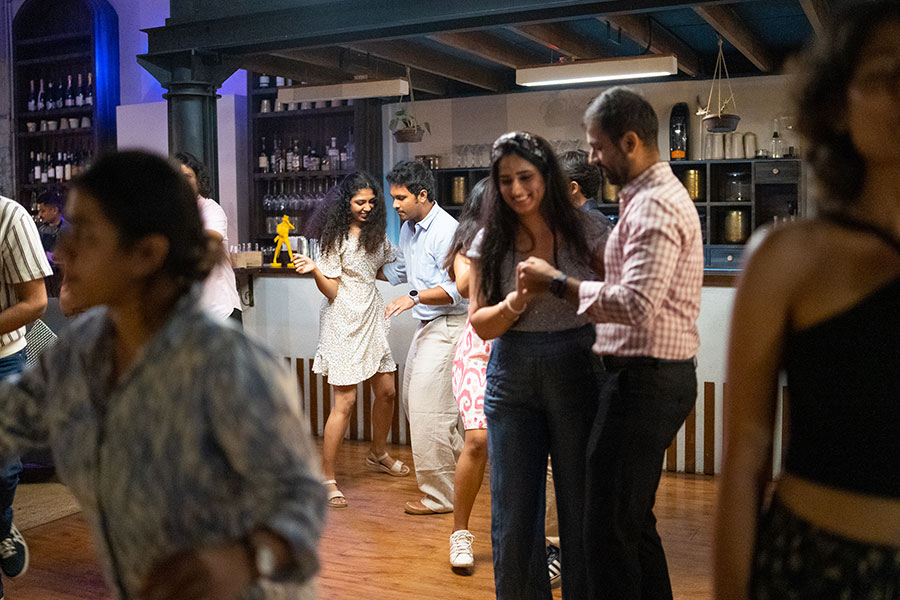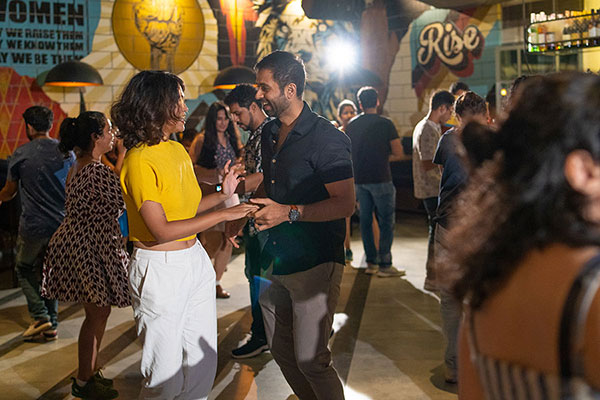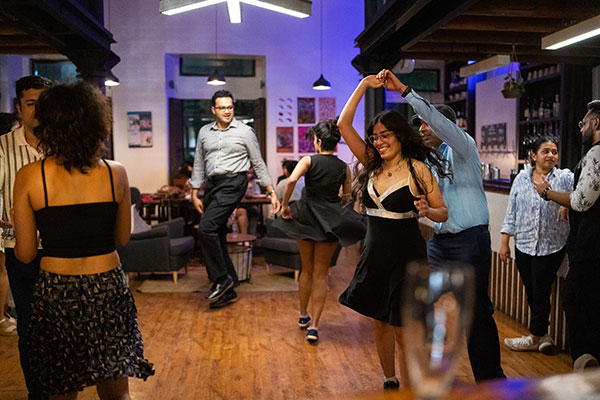Wondering what a Lindy Hop or Jive class can do for you?
Here's why your New Year's resolution should involve a social dance form

Do you have a favourite hangout spot at a park, maybe a bar or community center? Maybe you have a bookstore or library you love visiting a couple of times a month; maybe it's a cafe with live music, dance and fitness studio, local salon or pottery studio. Well, this sort of place is what sociologists call a “third place”. If home and the people living with you at home are considered ‘first places’, and your place of work is second, your third place is the place you go to unwind from work, or escape from the mundane chores and routines of home. It's a place where we choose to be, rather than a place we're required to be. Research shows that third places have been, and are important in the history of human evolution, to creativity, innovation, a sense of community, and to overall quality of life. Without third places, our collective mental, and even physical health would be significantly worse, we would have fewer opportunities to create profound works of art, or bounce ideas off each other in day to day life.
What happened to third places?
Even prior to the COVID-19 pandemic, there has been a sort of a concerted onslaught on our third places by people, corporations, and governments interested only in how much revenue they can generate off physical spaces, and/or the social interactions that occur within. With small, locally owned establishments being replaced by faceless, non-local, national, or even international owners, easily accessible third places like gyms, bars, salons and cafes become expensive, alien, and unappealing to those just looking for a sense of community or a break from work and home responsibilities. During the pandemic, this was made far worse for many, with a collision of work and living spaces, and has led to an increasing sense of loneliness and isolation.
What does social dancing have to do with this?
The hint is right there in the name. Salsa, Lindy Hop and Jive are all ‘social dances’, which means that unlike theatrical, performance, or competition-oriented dance forms, social dances originated in social settings, and evolved as a way to create and maintain social connections. From the very moment you enter a dance class, to the day you (hopefully) join us at a social dance night, everything we do is geared towards creating a friendly, social community. Whether it's the casual post-class group hangouts, the new people you might meet at the holiday-themed party nights, or the close-knit friendships formed in the end-of-year performance batches, there's something for everyone who might be looking for some sense of community.

Why we host Lindy Hop and Blues, not Jive, West Coast Swing or Salsa classes
What initially drew me to the dance form was honestly the music more than anything else. Having grown up listening to Jazz standards played at weddings, and the Blues music older family members listened to, I was ecstatic to discover that there were dance classes for adults in Mumbai for authentic partner dance forms that evolved with these genres of music. There's also the fact that nothing feels better than dancing to live music at a Jazz club like they used to back in the old days, and there's a lot of live Blues and Jazz music to be found in Mumbai, whereas the opportunities for live bands playing Latin dance music are a lot more limited. Something that hooks a lot of people is how relatable much of the music is, especially in terms of language. Most Swing and Blues music is English music, but there is a sizeable body of Hindi compositions as well.
Another thing that drew me to Swing and Blues is the community, both locally and abroad. While I've danced Latin and Jive for a number of years, I've found the Swing community to be the most friendly and inclusive, hands down.
Lastly, with their African American roots, Swing and especially Blues are very open-ended, improvisational dance forms based in individual expression, and a constant dialogue both between partners (the lead and the follow), and between dancers and musicians (in the context of live music). Other social dance forms, especially Latin and Afro-Latin dance forms which came after Swing and Blues share many traits, especially the improvisational aspects, but there remain generational trends that are slow to change.
For example, role-switching (men following or women leading) is something that has only picked up more recently in the Latin dance community, whereas men and women have historically danced both roles when it came to Swing and Blues.
Likewise, there's a more recent trend that has seen significant movement in a positive direction with Swing and Blues communities. Up until recently, most dance forms were roughly on the same page with respect to the three main aspects of social dancing; leads would initiate steps and follows would follow, leads and follows would both make their steps look better by incorporating individual styling, and both leads and follows would occasionally break into solo improvisation. However, Swing and Blues dancers have begun consciously ‘breaking’ the first rule by affording follows the ability to suggest steps in very organic ways. In other dance forms some might call this “backleading”, which is a negative term for follows doing something without input from the lead, or opposing the leads input. As Swing instructors, we reject concepts such as “backleading” and prefer to think of the lead-follow dynamic as more of a conversation where both people are constantly listening and suggesting things rather than one suggesting and the other listening.
Now this is actually not something new and has existed almost as long as the dance forms themselves, but is something that is now being consciously taught and celebrated. All this, in addition to creating inclusivity for all people, genders, races and classes, and a focus on accessibility, equality, and safety are things that made us stick around to dance, and teach Swing and Blues.
What kind of third place we try to create at Slingshot Swing
You might wonder why we talked at such length about inclusivity, equality and the desire for both partners to have a voice in the dance. Take the example of something as simple as a follow choosing to style a move by flicking their hips or doing a hip roll. As unfortunate as it is, there are some dance forms where even the follows styling is mostly controlled (in this case physically moving the follow’s hips) or led by the lead. In our experience, that kind of thing can not only put people off, but leads to a feeling that some people or groups of people are not really equal participants in the dance and community. In the long run, we feel this is detrimental to the existence of social dance forms as third places. We do not tolerate any form of discrimination, and are very particular about respect and consent. We also encourage those that attend our classes and socials to make these principles a fundamental part of how they interact with others.

In terms of accessibility, we do our best to make events financially accessible to people, with inexpensive practice sessions and socials, and discounts and frequent giveaways. We also do our best to make classes accessible to people in terms of structure and scheduling, with a short but comprehensive Level 1, and higher levels with flexible-attendance structure, knowing people can have very fast paced lives. Our teaching style has also evolved countless times over the years, as we constantly refine it to accommodate different learning styles, and leave every student feeling that while some things might be challenging to them, they're not being ‘left behind’ in a class. If you don't believe us about how much fun our little dance community is, check out the reviews past students and dancers have left us.
So, while the new year isn’t quite here yet, at least you have a little time to convince yourself to join our dance classes in Bandra.
